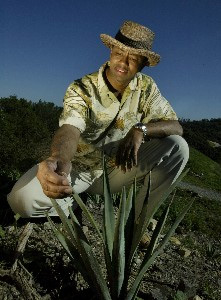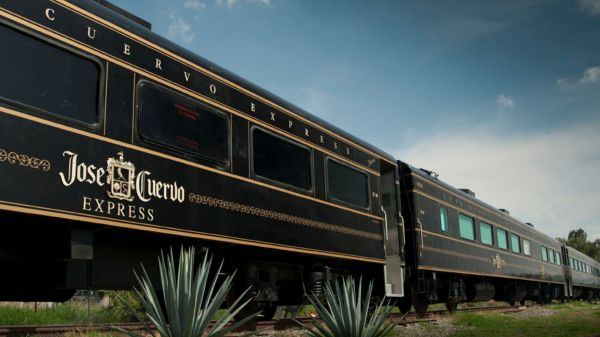Tequila, Mexico - A train trip through the fields of agave to the town of Tequila, in the west-central state of Jalisco, enables visitors to learn some of the secrets behind the production of the quintessentially Mexican beverage.
On the first stop of the Jose Cuervo Express, tourists can witness the procedure for harvesting the agave plant, from which the fiery liquor is made.
Under the interested gaze of visitors, harvester Ismael Gama and a worker identified only as Manuel demonstrated the use of a special tool called a "coa" to trim the agave plant to prevent the heart – which contains the raw material used to make tequila – from flowering and dying early, thus allowing it to fully ripen.
 |
There are more than 200 varieties of agave, but the Tequilana Weber Blue variety is the only one suitable for making the liquor, as per Designation of Origin product regulations. Each plant grows and matures in the field for 8-10 years before it is suitable for treatment and processing.
The next step in the production process takes place in the town of Tequila, home to La Rojeña – the oldest distillery in the Americas – built after the Spanish King Charles IV granted the Cuervo family permission to make "mezcal wine."
This particular factory is responsible for a good part of the huge volume of tequila exported by the state of Jalisco every year. The volume produced varies depending upon the time of the year, but ranges "from 200,000 to 280,000 liters (52,834-73,968 gallons) of tequila per day," Rafael Lopez, one of the distillery’s guides, told EFE.
According to Lopez, there are only two kinds of tequila.
The first is considered 100 percent pure agave, in which the totality of the sugar fermented comes from the Tequilana Weber Blue variety of the plant.
However, if a part of the sugar is from another source – such as sugar cane – the tequila is said to have a proportion of 51-49, Lopez explained.
Original article


